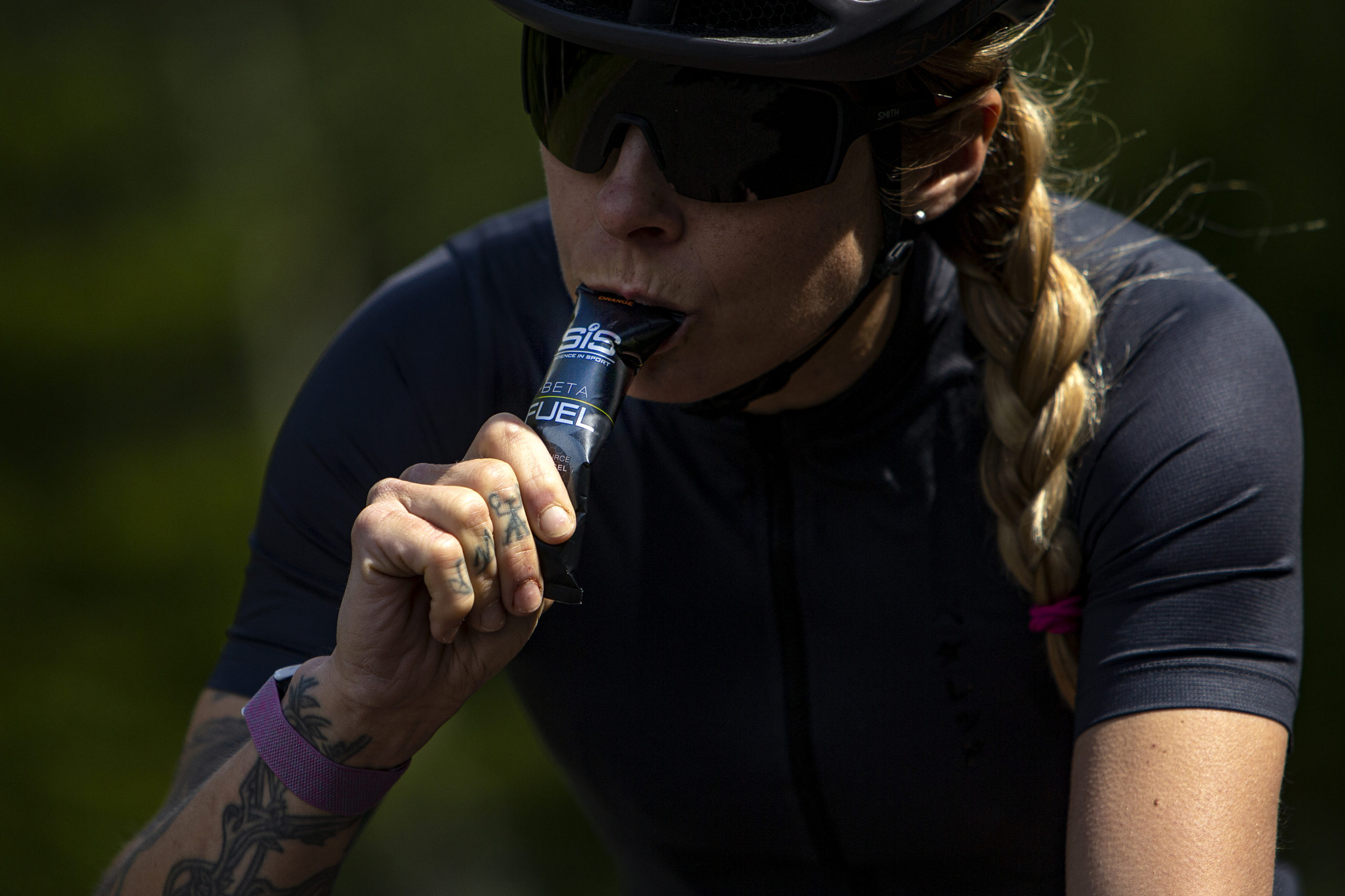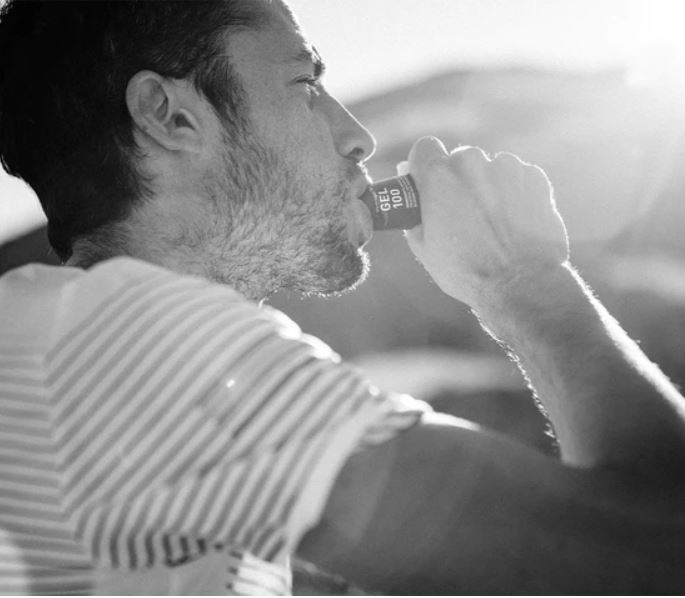Sports nutrition firms and researchers are continually tweaking formulations to solve the perennial paradox of endurance sports: the fact the human gut can struggle to process the sugar load required to fuel efforts over multiple hours.
Gastro distresses bound across the endurance sports spectrum for this reason.
The likes of alginate hydrogels and shifts from the somewhat standardised 2:1 glucose to fructose ‘dual fuel’ ratio attempt to address the issue.

Sports nutrition giant Science in Sport (SiS) just this month expanded its Beta Fuel powder into gels and chews to form a product suite it says substantially boosts in-body glycogen oxidisation in efforts of more than 2.5 hours when glycogen processing can be become problematic.
Although not as yet in possession of EU-approved health claims for the products, the UK-based firm is making much of its refinement of the range’s 2:1 maltodextrin-to-fructose ratio to 1:0.8 to claim 74% rather than 62% in vivo oxidisation rates – a 17% gain.
“We now know that we can change the ratio of those two sugars,” says SiS director of performance solutions, professor James Morton. “That allows us to utilise more of the ingested carbohydrate.”
Professor Morton claims a mix of the Beta Fuel products can be processed by endurance athletes at a rate of “80-120 grams of carbohydrates per hour with minimal gastro discomfort.”
He says runners – who typically have greater gastro issues due to sloshing – can also reach these processing and comfort levels “if they practice in training and consume the correct amount of fluid.”
‘A very likely moderate enhancement of mean sprint power’
SiS cites a 2013 New Zealand study published in Medicine & Science in Sports & Exercise where the 17% 1:0.8 increase was recorded among 12 amateur male cyclists, mountain bikers and triathletes who rode for two hours at 57% peak power before completing 10 sprints.
The study also found the 1:0.8 ratio out-performed a 1:1.25 maltodextrin-to-fructose ratio in terms of percentage of carbs oxidised.
The cyclists drank 400ml before the effort, then 200ml every 15 minutes during it with the dual fuel delivering, the researchers concluded, “a very likely moderate enhancement of mean sprint power”.
In accounting for the popularity of the 2:1 ratio, professor Morton, who is also a professor of exercise metabolism at Liverpool John Moores University and served a few years as the nutrition and physical performance lead at Team Sky (now INEOS Grenadiers), says “the scientific community jumped on it in the early 2000s”.
At this time dual carb source fuelling research was in its infancy and pushing carb oxidisation rates from the widely accepted single source limit of about 60g, upward of 100g an hour in highly trained athletes.
Professor Morton says a clinical study is underway at his university to test the full range among trained cyclists.
The Beta Fuel range also contains a gel SiS is linking with nootropic benefits due to the presence of 250mg of Cognizin citicoline plus 1g of the amino acid L-taurine, 200mg of caffeine and 200mg of green tea extract, L-theanine.
Maurten moves in on the pro peloton but will amateurs follow?

Swedish sports nutrition specialist Maurten was an early adopter of the 1:0.8 ratio in its patent pending hydrogels and powders that have been especially popular in the long-distance running world since 2016 with some high-profile endorsements including Eliud Kipchoge’s sub-2 hour marathon in Vienna in 2019.
But it is the presence of sodium alginate sourced from brown algae and pectin in its hydrogels and drink mixes that are touted as its primary game changer – by forming what the company calls “a biopolymer matrix that holds carbohydrates” and allows them to be better processed.
“I used it on a few of the hard days at the Vuelta and felt really good with good digestion and the ability to take on a really high amount of carbohydrates quickly without any consequences,” says Israel Start-up Nation rider, Dan Martin.
Like SiS’s Beta Fuel, Maurten’s powders contain 80g of carbs.
Maurten comms chief Herman Reutersward, is excited about its recent push into the pro peloton and beyond.
“There’s a huge surge in interest from the world of cycling,” he says. “In the world of running we’re the dominating brand – and 80% of the world elite in road running are using our products. It took us two years to get to that position in running.
“What we’re experiencing in cycling right now is very similar to what we experienced in the running scene in 2018. Elite riders are contacting us, although their teams have other sponsors or they’re just buying online.”
Men’s World Tour cycling teams like Jumbo-Visma, Intermarché-Wanty-Gobert Matériaux and ISN and women’s team Canyon-SRAM are officially working with Maurten’s products.
A collaboration on a new product with Jumbo-Visma is underway that may transport other nutrients beside carbohydrates in Maurten hydrogels, according to Reutersward.
“We are currently testing a new and very interesting prototype, that could really be a game changer in our nutritional approach of competitions,” says Jumbo-Visma head of performance Mathieu Heijboer.
Research issues
However even Reutersward admits the clinical data backing the product is not super strong – in elite athletes at least – with six studies on amateur runners and cyclists yielding largely inconclusive results.
“In the limited published literature, alginate gels are no better or worse than 2:1 carbs for oxidation rates,” observes Mark Tallon, PhD, UK-based nutrition expert and founder of triathlon training service TriathlonLab and food law consultancy Legal Foods.
“It should be noted the published literature is limited if we are trying to apply this in elite sports as the runners and cyclists in the published studies are not elite. In addition we don’t see intakes akin to one day or multi day cycling events where athletes may be fuelling for five or more hours.”
A source said such a study using Maurten products was underway.
The final word: be the experiment
What is clear here is the discrepancy that frequently exists between what works for elite athletes and the rest, even highly trained amateurs.
Professor Morton says Beta Fuel played a role In Chris Froome’s remarkable 2018 Giro d’Italia stage 19, 80km solo attack that won him that year’s edition; not to mention last year’s surprise 2020 Giro victor, Tao Geoghegan Hart.
Froome’s ride was, professor Morton reflects, “very iconic for his use of carbohydrates during that day”.
So there is that elite level, but what is also true of sports nutrition science is that it is often ambiguous in its findings because human physiology – not to mention training level and overall nutrition – is so variable.
Perhaps the only way to find out if these kinds of gains are accessible to you is to make yourself the central subject of your very own sports nutrition experiment.
Sure the folks at SiS and Maurten would love to hear from you about the results – as would we.